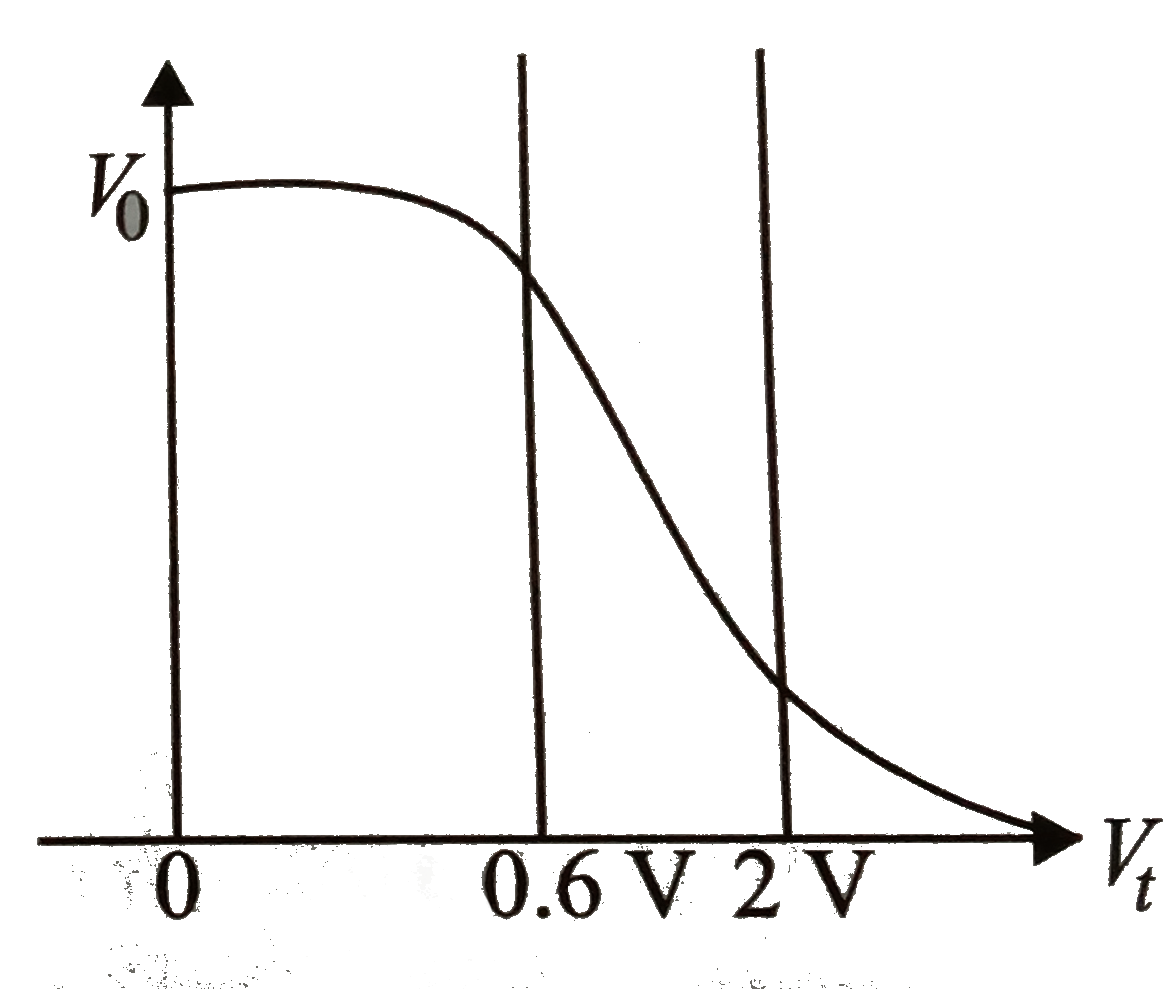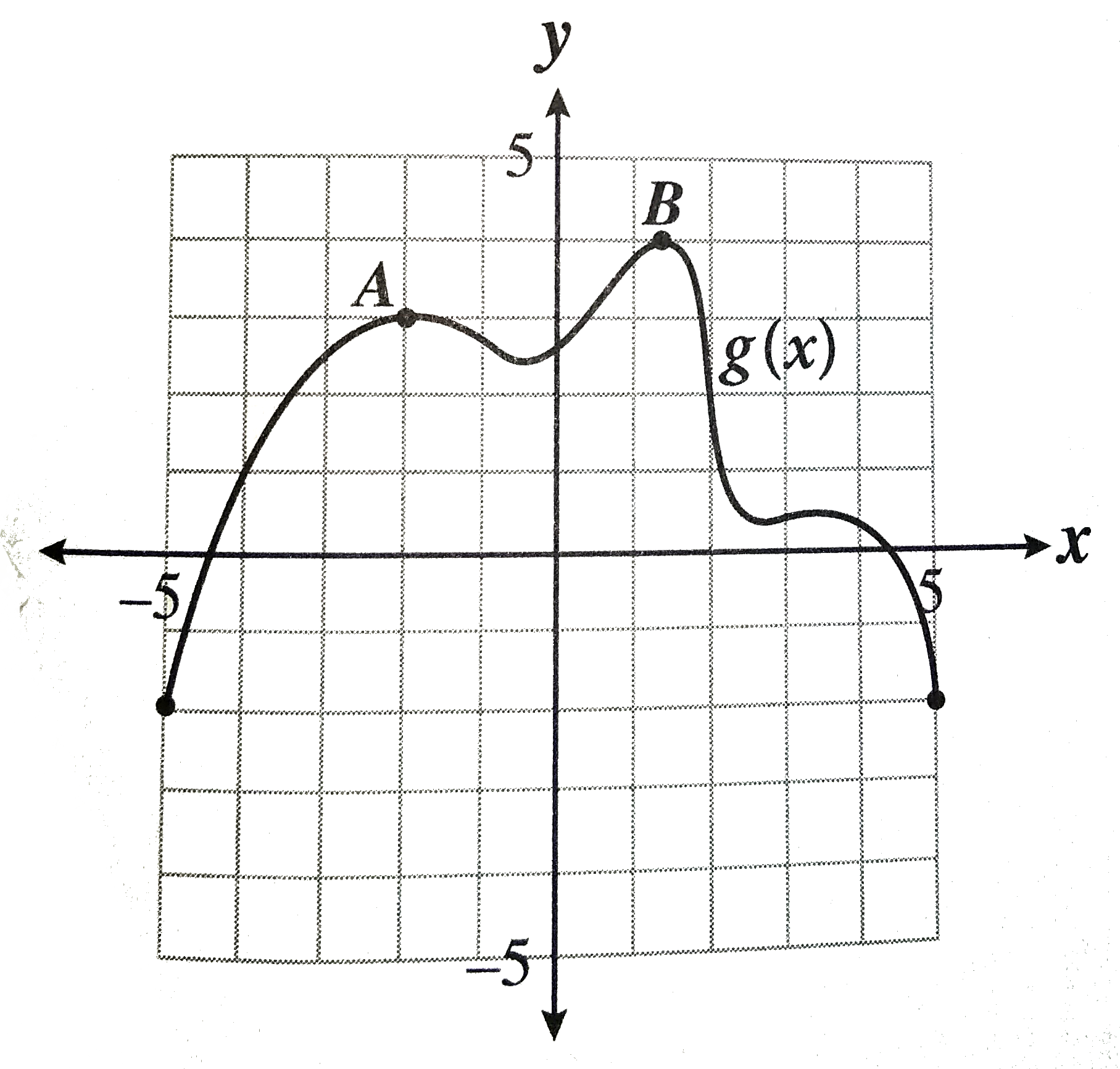The transfer characteristics of a base biased common emitter transistor is shown in the figure. Which of the following statements are true?

At Vi=0.4V, transistor is in active state
At Vi=1V, it can be used as an amplifier
At Vi=0.5V, it can be used as a switch turned off
At Vi=2.5V, can be used as a switch turned on
The correct Answer is:B, C, D
From the given transfer characteristics of a base biased common emitter transistor, we note that.
(i) When V1=0.4V, there is no collection current. The transistor circuit is in active state and is used as an amplifier,
(ii) When V1=1V (This is in between 0.6 V to 2V), the transistor circuit is in active state and is used as an amplifier,
(iii) When V1=0.5V, there is no collector currect. The transistor is in cut off state. The transistor circuit can be used as a switch turned off.
(iv) When V1=2.5V, the collector current becomes maximum and transistor is in saturation state and can used as switch turned on state.
Topper's Solved these Questions
- NUCLEIBOOK - NCERT EXEMPLAR ENGLISHCHAPTER - NUCLEIEXERCISE - Very short Anwer type question
14 Videos
- NUCLEIBOOK - NCERT EXEMPLAR ENGLISHCHAPTER - NUCLEIEXERCISE - Long answer type question
10 Videos
- MOVING CHARNGES AND MAGNETISMBOOK - NCERT EXEMPLAR ENGLISHCHAPTER - MOVING CHARNGES AND MAGNETISMEXERCISE - Long Answer Type Questions
7 Videos
- RAY OPTICS AND OPTICAL INSTRUMENTS BOOK - NCERT EXEMPLAR ENGLISHCHAPTER - RAY OPTICS AND OPTICAL INSTRUMENTS EXERCISE - VERY SHORT ANSWER TYPE QUESTIONS
16 Videos
Similar Questions
Knowledge Check
Fig.shows that transfer characteristics of a base biased CE transistor. Which of the following statements are true?
 AAt Vi=1V, it can be used as an amplifierBAt Vi=0.5V, it can be used as a switch turned offCAt Vi=2.5V, it can be used as a switch turned onDAll of these
AAt Vi=1V, it can be used as an amplifierBAt Vi=0.5V, it can be used as a switch turned offCAt Vi=2.5V, it can be used as a switch turned onDAll of these
A ray of light is incident in situation as shown in figure.
_S01_055_Q01.png)
Which of the following statements is/are true?
View SolutionFor the circuit shown, which of the following statements is true

View SolutionThe transfer characteristics of a base biased common emitter transistor is shown in the figure. Which of the following statements are true?

View SolutionThe displacement-time graph of a particle executing SHM is shown in figure. Which of the following statement is/are true ?

View SolutionThe displacement - time graph of a particle executing SHM is shown in figure. Which of the following statements is//are true ?

View SolutionThe potential energy curve for interaction between two molecules is shown in figure. Which of the following statements are true?
View Solution
The graph of g(x) is shown in the figure above. If h(x)=−g(x)+1, which of the following statements is true?
View Solution

